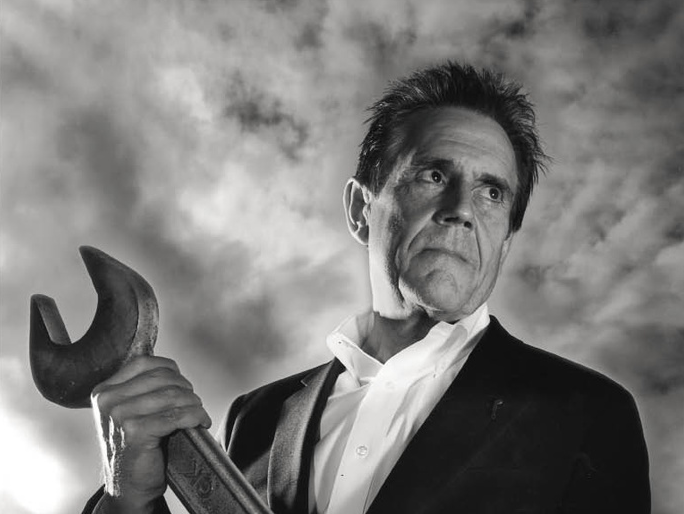Looking beyond the bridge of awards
Dave Trott looks at the long-term effects of award-winning campaign Bridge of Life, which aimed to reverse suicide rates at the Mapo bridge in Seoul.
In 2013, the Cannes Titanium Lion went to a campaign called Bridge of Life. In fact, the campaign won 37 awards around the world.
So it was a success, at least as far as awards went.
And that’s pretty much the only metric advertising measures anything by.
But was it a success by any other metric, like what happens in the real world? Well, that isn’t quite so clear.
The back story is the Mapo bridge in Seoul was famous for suicides. In fact it was known as the Bridge of Death.
The normal way to stop people jumping off a bridge would be to put up railings or fences, to make it physically impossible to jump.
But this didn’t seem very creative to the advertising agency or their client. So they ignored that idea and instead spent the money on emotional triggers.
As people walked across the bridge sensors would switch on lights to illuminate messages.
“Worries Are Nothing”
“Tomorrow’s Sun Will Rise”
“I Love You”
“The Best Is Yet to Come”
“Have You Been Eating Alright?”
“Let’s Walk Together”
“What’s Troubling You?”
In the centre of the bridge was a bronze life-size sculpture of a young man on a bench, touching the cheek of another young man. Also there was a selection of illuminated images: photographs of babies, grandparents, young couples smiling.

This, the awards jury were told, caused the bridge to be renamed, from ‘Bridge of Death’ to ‘Bridge of Life’.
And as usual, on the submission video, there followed a string of statistics. The main one was that suicides had fallen by 77% because of the installation.
Which is why it won all those awards.
But about a year after it won, some people expressed different views. On Sora News 24 the headline said: “Seoul Anti-Suicide Initiative Backfires”.
According to them, the statistics showed an increase in suicides due to people being drawn to the now famous bridge.
The Yohap News Agency said that attempted suicides rose to 396 in 2014, 543 in 2015, and 532 in 2016. The advertising agency responded that this was a mistranslation.
These figures were for people who came to the bridge contemplating suicide but changed their minds.
They said, correctly interpreted, the true figures were 15 attempted suicides with 8 actual fatalities, a greatly reduced number.
But other figures show 24-hour telephone counselling lines staffed by 6,000 volunteers stopped at least 85 people from jumping.
The debate is confused and unresolved, and gradually it petered out.
Last year’s awards were old news, all everyone cared about was this year’s awards.
Meanwhile the authorities say they are now putting up higher railings at Mapo bridge. 2.5 metres high instead of 1.5 metres.
Evidently the authorities don’t believe an emotional appeal is superior to physical barriers.
So how about the installation, did it do its job, did it work? Well yes, because it won awards. Which is after all, the real job for any piece of advertising or marketing.

Dave Trott is a consultant, author and former ad agency creative director. This article was first published on his blog.




An interesting point Dave, how about looking at one a little closer to home… did Dumb Ways to Die have a positive impact on the number of people being hit by trains in Melbourne?
User ID not verified.
I’ve found I can stop myself getting so angry at lauded but demonstrably ineffective social cause campaigns if I keep reminding myself creative awards are only ever a measure of visible cleverness. Regardless of category, creative awards must never be seen – and certainly never used – as a reliable currency of good advertising. Great stuff wins, terrible stuff wins, charlatans win and full-on cheats win. Side by side on the podium, every one of them is a genius. A telling question I like to ask is ‘would this campaign exist is awards didn’t exist?’ In the case of the Mapo Bridge, almost certainly not. The higher barriers would have gone up years sooner and lives would have been saved. Think about that all you agency glory-hunters.
User ID not verified.
“The Yohap News Agency said…rose to 396 in 2014, 543 in 2015, and 532 in 2016.
They said… 15 attempted suicides with 8 actual fatalities, a greatly reduced number.
But other figures show … volunteers stopped at least 85 people from jumping.”
What exactly are we comparing here? There is a damned big difference from 532 and 15 and then a jump to 85! There are dates for the first set of numbers but nothing for the last two!
Basically this article has to;d us very little about where the Mapo Bridge’s “Bridge of Life” stands now in terms of suicide rates for 2018.
User ID not verified.